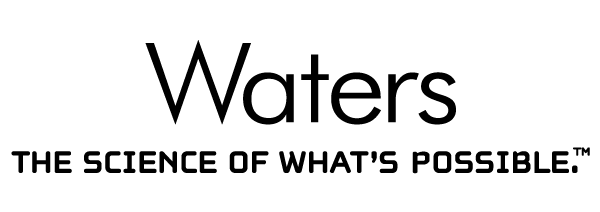 | >> Sunday 7:00 PM @ Harbor Ballroom
Commercialization and Protection of Intellectual Assets in Applications of Mass Spectrometry
Ben Borson
Borson Law Group, PCBringing improvements in assessing conditions using Mass Spectrometry (MS) requires substantial investment in research, development of devices and methods for diagnostic and therapeutic interventions. Investments are unlikely to be made unless returns on those investments can be realized. Returns are made possible through licensing of patented inventions, trade secrets, and other intellectual assets (IP). With proper strategies combining business, technology, and the law, commercializing important innovations will result in improved patient care, recognition of innovators' contributions, and business success, all of which can lead to further innovation and improvements in health care. |
| |
 | >> Monday 8:30 AM @ Harbor Ballroom
Direct Mass Spectrometric Characterization of Fluids, Cells and Tissues - the Benefits and the Price of Real-Time Analysis
Zoltan Takats
Imperial College LondonDevelopment of ambient mass spectrometric techniques opened a new way of looking at clinical samples regarding the simplicity (and time demand) of analysis and the nature of data produced by these techniques. Application of these approaches in cancer surgery, histopathology, clinical microbiology and clinical chemistry has been successfully demonstrated. While these techniques mean valid alternatives to currently used technologies - with clear benefit on both cost and reliability sides - their widespread application can potentially change the current landscape of medical diagnostics. Future role of these methods in stratified clinical patient journeys will be discussed with particular emphasis on the currently unresolved problems and their future solutions regarding both regulatory and technology aspects. |
| |
 | >> Monday 9:15 AM @ Harbor Ballroom
When Clinical Lab Tests Fail: New Paradigms of Metabolic Regulation
Gary Patti
Washington University School of MedicineTraditionally, mass spectrometry-based metabolomics has been applied to identify metabolites whose levels are altered as a function of disease. While this platform has provided great insight into many pathologies, it fails to identify important changes in metabolites whose levels are homeostatically controlled by multiple converging pathways. Here we describe an isotope-based platform that enables tracking of pathway dynamics at the systems level. To accomplish this approach, we have developed an extension of the widely used XCMS metabolomic software that processes data from isotopically enriched samples in an automated fashion. We show that monitoring isotope incorporation at the systems level provides new insights into cancer pathogenesis that would otherwise be missed by standard metabolomic approaches. |
| |
 | >> Monday 7:00 PM @ Harbor Ballroom
Genetic Defects in Bile Acid Synthesis Causing Liver Disease - Diagnosis and Treatment - Translational Medicine from Mass Spectrometry Discovery to the Bedside
Kenneth D. R. Setchell
University of Cincinnati College of MedicineThe combined application of FAB-MS with metabolic profiling using GC-MS, and electrospray HPLC-MS with accurate mass measurement led to the discovery of six genetic defects in the complex pathway for bile acid synthesis from cholesterol. The biochemical basis of each defect was characterized, mutations in genes encoding the respective enzymes confirmed, and a successful therapy developed. These genetic defects accounted for 2% of >12,000 cases screened for unexplained liver disease. Early diagnosis is important because patients with these fatal forms of metabolic liver disease respond successfully to oral primary bile acid therapy, thereby avoiding the need for liver transplantation - the only other therapeutic option. Based on the successful application of this therapeutic strategy, oral cholic acid therapy was granted approval in November 2013 by the European Medicines Agency (EMA) for the treatment of these bile acid synthetic defects and is currently under review by the US FDA.
This presentation of more than two decades of work is an example of translational medicine - taking a clinical problem at the bedside, to the utilization of mass spectrometry to define a new class of metabolic liver disease, to the development of a successful and safe therapy, and finally taking this back to the bedside by obtaining regulatory approval.
|
| |
 | >> Tuesday 8:30 AM @ Harbor Ballroom
Accelerating Clinical Mass Spectrometry; Workflows and Whitespace
Russell Grant
Laboratory Corporation of AmericaOver the last decade, LC-MS/MS technologies have evolved from their innate promise of reference level measurement to become a circumscribed technology in patient management. The implementation of LC-MS/MS reflects the abstruse and inchoate status of the platform; we are challenged with ensuring future advancements are not ersatz as we balance sanguine hype and egregious hubris.
This presentation will highlight our efforts to enable LC-MS/MS and peripheral technologies in clinical diagnosis, subsequently converting the apostates. Specific examples involving contiguous automation from patient to result, atavistic enhancements in hormone analysis, targeted protein analysis despite opprobrium and functional immune-response determination will be shown as we adduce the locution "mass spectrometry est sui generis".
|
| |
 | >> Tuesday 9:15 AM @ Harbor Ballroom
Moving Mold Identification into the 21st Century with MALDI-TOF MS
Anna Lau
National Institutes of HealthMALDI-TOF MS has revolutionized clinical microbiology laboratories, enabling accurate bacterial and yeast identification within minutes at minimal costs and labor. However, mold identification by mass spectrometry has lagged, forcing many laboratories to rely on slow phenotypic methods that are prone to misidentifications. This presentation will describe the development of the NIH Mold Database - a clinically comprehensive, freely available database for the identification of molds from solid media. Its clinical performance will be highlighted through a series of multicenter studies and case presentations, with the NIH Mold Database outperforming a commercially available database. The NIH Mold Database has pushed the boundaries of clinical mycology, providing faster therapeutic guidance, positively impacting patient care, and opening new doors and challenges for clinical research. |
| |





















